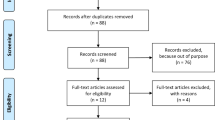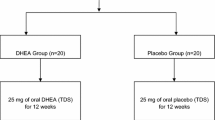Abstract
Purpose: To evaluate the impact of ascorbic acid of different doses as additional support during luteal phase in infertility treatment by means of a prospective, randomized, placebo-controlled, group comparative, double-blind study. Methods: Voluntary daily oral intake of either ascorbic acid (1, 5, or 10 g/day) or Placebo for 14 days after follicle aspiration for IVF-ET procedure. Data was obtained on 620 cases of women, age <40 years, undergoing first IVF-embryo transfer cycles in two private out-patient infertility clinics. All women were stimulated by the same protocol. The mean age was 31.73 (±4.4 SD) years. Results: No differences in clinical pregnancy rate and implantation rate were noted in statistical logistic regression analysis between the four intake groups. Conclusions: There was no clinical evidence of any beneficial effect, as defined by main outcome measures, of ascorbic acid on IVF-ET. Our data suggest there is no obvious value of high dosed intake of vitamin C during luteal phase in infertility treatment.
Similar content being viewed by others
REFERENCES
Paeschke KD: The role of ascorbic acid in ovulation. Zentralbl Gynakol 1969;91(35):1129–1132
Millar J: Vitamin C–the primate fertility factor? Med Hypotheses 1992;38:292–295
Wagner F, Hofmann KD, Preibsch W, Koob G: Ascorbic acid content of the human ovary. Zentralbl Gynakol 1970; 92(33):1060–1061
Hoch-Ligeti C, Bourne GH: Changes in the concentration and histological distribution of ascorbic acid in ovaries, adrenals and liver of rats during oestrus cycle. Br J Pathol 1984;29: 400–407
Deane HW: Histochemical observation on the ovary and oviduct of the albino rat during the oestrus cycle. Am J Anat 1952;91:363–393
Levine M, Morita K: Ascorbic acid in endocrine systems.Vitam Horm 1985;42:1–64
Musicki B, Kodaman PH, Aten RF, Behrman HR: Endocrine regulation of ascorbic acid transport and secretion in luteal cells. Biol Reprod 1996;54(2):399–406
Paszkowski T, Clarke RN: The Graafian follicle is a site of L-ascorbate accumulation. J Assist Reprod Genet 1999;16(1): 41–45
Himeno N, Kawamura N, Okamura H, Mori T, Fukumoto M, Midorikawa O: Collagen synthetic activity in rabbit ovary during ovulation and its blockage by indomethacin. Acta Obstet Gynaecol Jpn 1984;36:1930–1934
Luck MR, Zhao Y: Structural remodelling of reproductive tissues. J Endocrinol 1995;146(2):191–195
Luck MR, Zhao Y: Identification and measurement of collagen in the bovine corpus luteum and its relationship with ascorbic acid and tissue development. J Reprod Fertil 1993;99(2):647–652
Kramer MM, Harman MT, Brill AK: Disturbances of reproduction and ovarian changes in the guinea-pig in relation to vitamin C deficiency. Am J Physiol 1933;106:611–622
Eipper BA, Mains RE:The role of ascorbate in the biosynthesis of neuroendocrine peptides. Am J Clin Nutr 1991;54: 1153S–1156S
Goralczyk R, Moser UK, Matter U, Weiser H: Regulation of steroid hormone metabolism requires L-ascorbic acid.Ann NY Acad Sci 1992;669:349–351
Luck MR, Jungclas B: The time-course of oxytocin secretion from cultured bovine granulosa cells, stimulated by ascorbate and catecholamines. J Endocrinol 1988;116(2): 247–258
Guarnaccia MM, Takami M, Jones EE, Preston SL, Behrman HR: Luteinizing hormone depletes ascorbic acid in preovulatory follicles. Fertil Steril 2000;74(5):959–963
Aten RF, Duarte KM, Behrman HR: Regulation of ovarian antioxidant vitamins, reduced gluthatione, and lipid peroxidation by luteinizing hormone and prostaglandin F2α. Biol Reprod 1992;46:401–407
Behrman HR, Preston SL: Luteolytic actions of peroxide in rat ovarian cells. Endocrinology 1989;124:2895–2900
Margolin Y, Aten RF, Behrman HR: Antigonadotropic and antisteroidogenic actions of peroxide in rat granulosa cells. Endocrinology 1990;127:245–250
Buettner GR: The pecking order of free radicals and antioxidants: Lipid peroxidation, α-tocopherol, and ascorbate. Arch Biochem Biophys 1993;300:535–543
Polak G, Koziol-Montewka M, Gogacz M, Blaszkowska I, Kotarski J: Total antioxidant status of peritoneal fluid in infertile women. Eur J Obstet Gynecol Reprod Biol 2001;94: 261–263
Tilly JL, Tilly KI: Inhibitors of oxidative stress mimic the ability of follicle stimulating hormone to suppress apoptosis in cultured rat ovarian follicles. Endocrinology 1995;136: 242–252
Kololdecik TR, Aten RF, Behrman HR: Ascorbic aciddependent cytoprotection of ovarian cells by leukocyte and nonleukocyte peroxidases. Biochem Pharmacol 1998;55(9): 1497–1503
Qanungo S, Mukherjea M: Ontogenic profile of some antioxidants and lipid peroxidation in human placental and fetal tissues. Mol Cell Biochem 2000;215(1/2):11–19
Wilson CW: Letter: Vitamin C and fertility. Lancet 1973; 2(7833):859–860
Luck MR, Jeyaseelan I, Schoels RA: Ascorbic acid and fertility. Biol Reprod 1995;52:262–266
Igarashi M: Augmentative effect of ascorbic acid upon induction of human ovulation in clomiphene-ineffective anovulatory women. Int J Fertil 1977;22(3):168–173
Phillips PH, Lardy HA, Boyer PD, Werner GM: The relationship of ascorbic acid to reproduction in the cow. J Dairy Sci 1941;24:153–158
Guerin P, Mouatassim SE, Menezo Y: Oxidative stress and protection against reactive oxygen species in the pre implantation embryo and its surroundings. Hum Reprod 2001;7(2): 175–189
Chatterjee IB: Evolution and the biosynthesis of ascorbic acid. Science 1973;182:1271–1272
Kemeter P, Feichtinger W: Experience with a new fixed stimulation protocoll without hormone determinations for programmed oocyte retrieval for in vitro fertilization. Hum Reprod 1989;4:53–58
Vural P, Akgul C, Yildirim A, Canbaz M: Antioxidant defence in recurrent abortion. Clin Chim Acta 2000;295(1/2):169–177
Polak G, Koziol-Montewka M, Gogacz M, Blaszkowska I, Kotarski J: Total antioxidant status of peritoneal fluid in infertile women. Eur J Obstet Gynecol Reprod Biol 2001;94(2):261–263
Miesel R, Drzejczak PJ, Kurpisz M: Oxidative stress during the interaction of gametes. Biol Reprod 1993;49:918–923
Yamashita T, Yamazaki H, Kon Y: Progressive effect of alphaphenyl-N-tert-butyl nitrone (PBN) on rat embryo development in vitro: Free Radic Biol Med 1997;23:1073–1077
Pauling L: Vitamin C and the Common Cold. San Francisco, WH Freeman, 1976
Pauling L: Vitamin C, the Common Cold and the Flu. San Francisco, WH Freeman, 1976
Pauling L: How to Live Longer and Feel Better. New York, WH Freeman, 1986
Kallner A, Hartmann D, Hornig D: Steady-state turnover and body pool of ascorbic acid in man. Am J Clin Nutr 1979;32: 530–539
Bendich A, Langseth L: The health effects of vitamin C supplementation: A review. J Am Coll Nutr 1995;14(2):124–136
Levine M, Conry-Cantilena C, Wang Y, Welch RW, Washko PW, Dhariwal KR, Park JB, Lazarev A, Graumlich JF, King J, Cantilena LR: Vitamin C pharmacokinetics in healthy volunteers: Evidence for a recommended dietary allowance. Proc Natl Acad Sci USA 1996;93(8):3704–3709
Grimble RF: Effect of antioxidative vitamins on immune function with clinical applications. Int J Vitam Nutr Res 1997;67(5):312–320
Crary EJ, McCarty MF: Potential clinical applications for highdose nutritional antioxidants. Med Hypotheses 1984;13(1):77–98
Franchin R, Harmas A, Benaoudie F, Lundkvist U, Oliviennes F, Frydman R: Microbial flora of the cervix assessed at the time of embryo transfer adversely affects in vitro fertilization outcome. Fertil Steril 1998;70(5):866–876
Murray AA, Molinek MD, Baker SJ, Kojiman FN, Smith MF, Hillier SG, Spears N: Role of ascorbic acid in promoting follicle integrity and survival in intact mouse ovarian follicles in vitro. Reproduction 2001;121(1):89–96
Author information
Authors and Affiliations
Corresponding author
Rights and permissions
About this article
Cite this article
Griesinger, G., Franke, K., Kinast, C. et al. Ascorbic Acid Supplement During Luteal Phase in IVF. J Assist Reprod Genet 19, 164–168 (2002). https://doi.org/10.1023/A:1014837811353
Issue Date:
DOI: https://doi.org/10.1023/A:1014837811353




